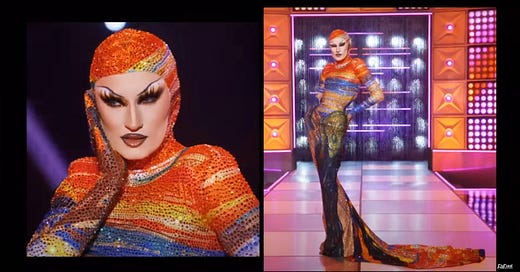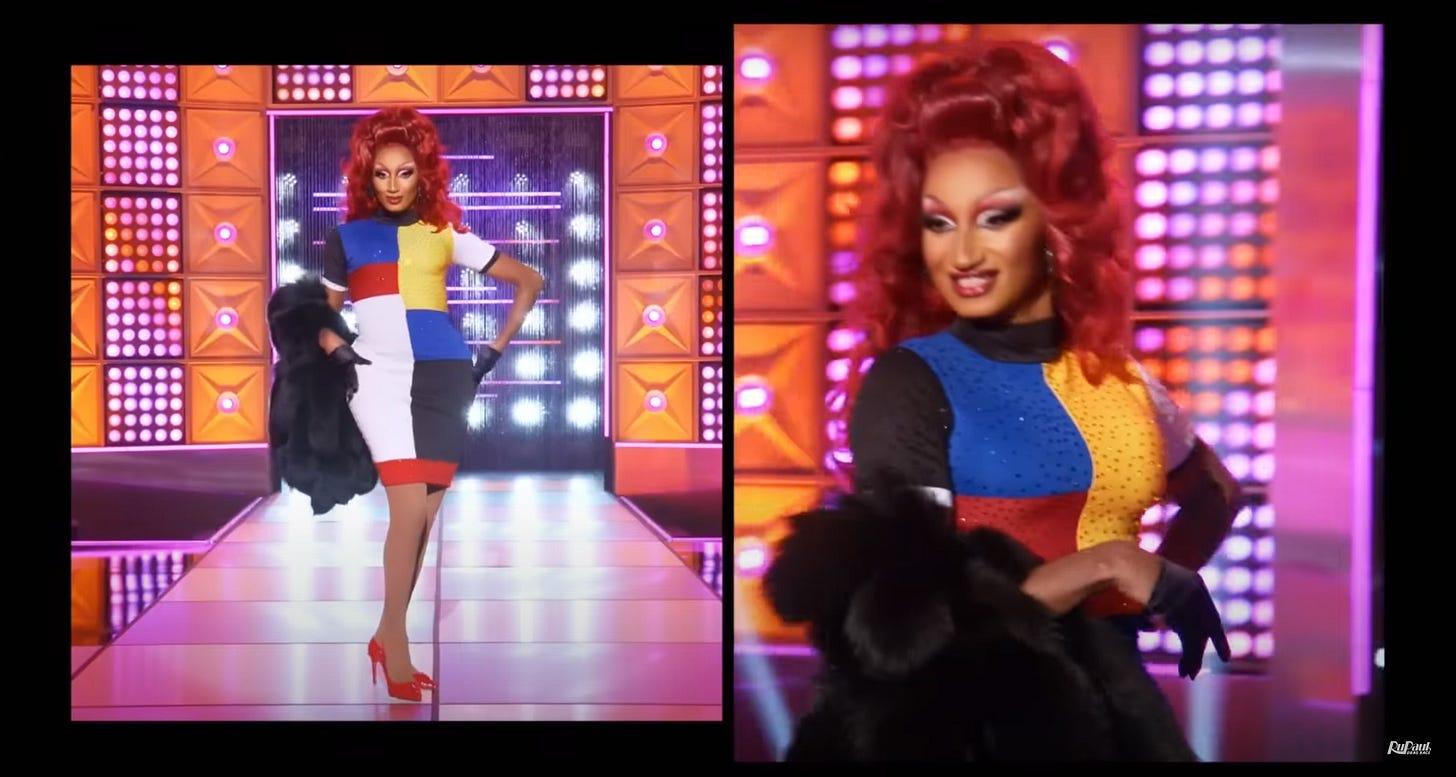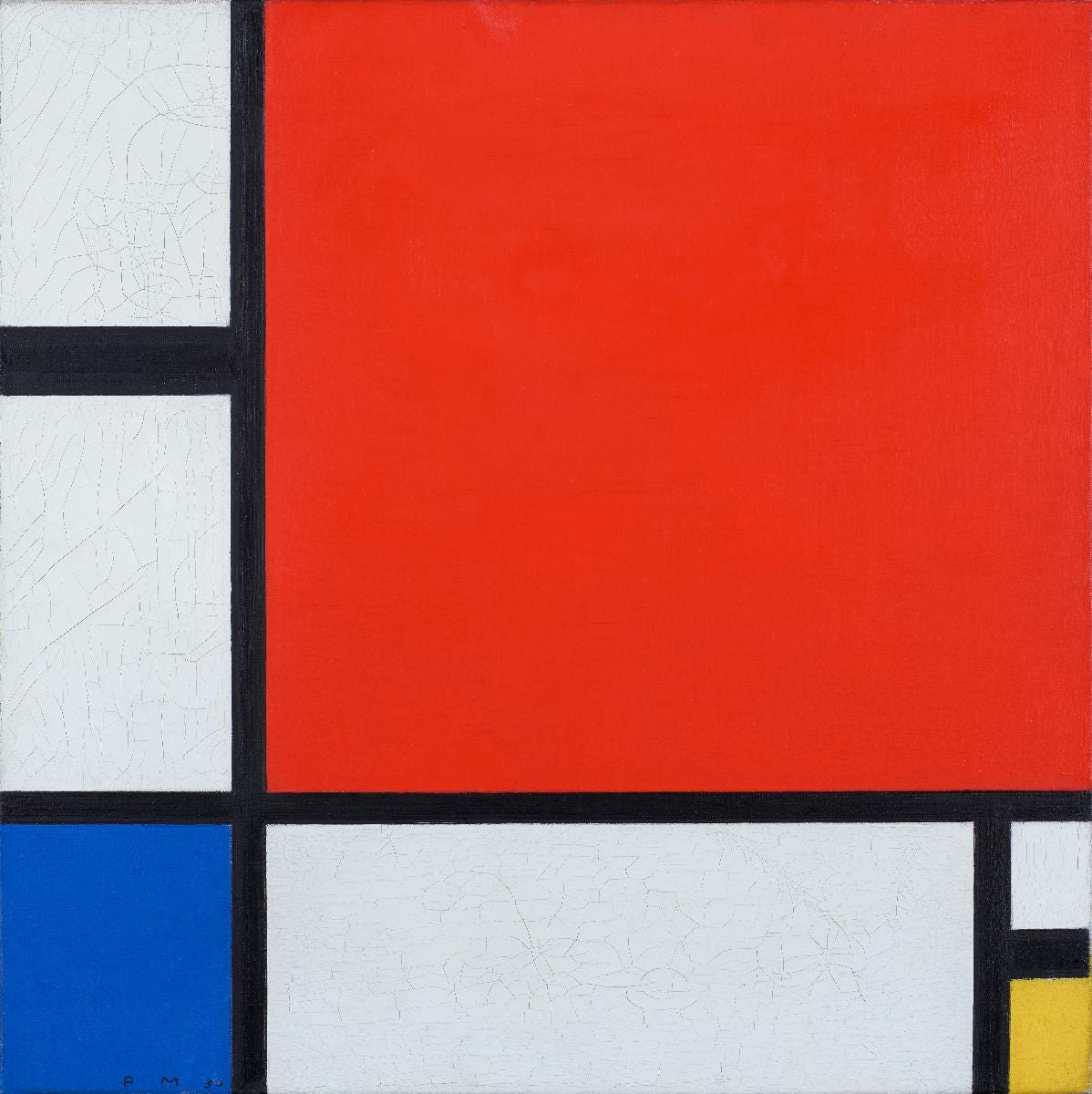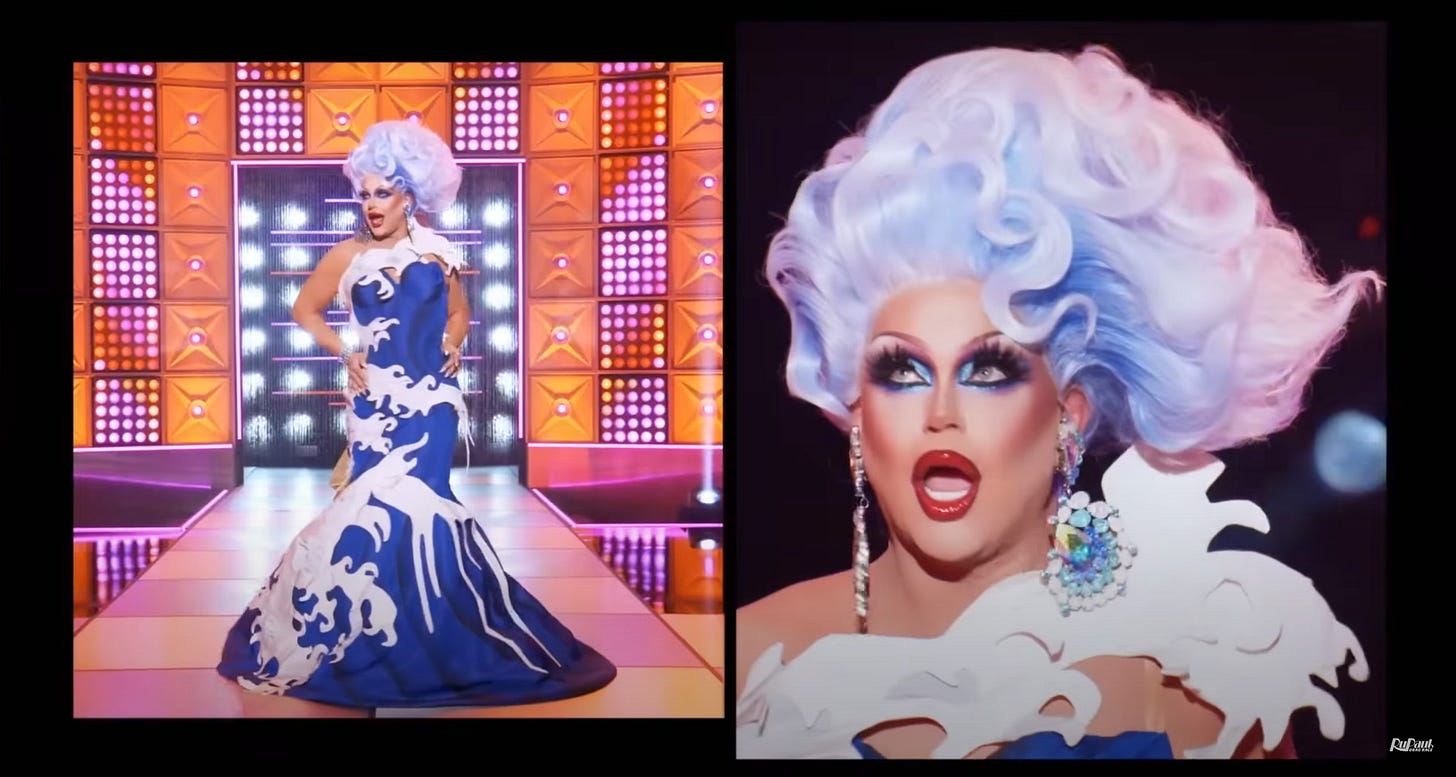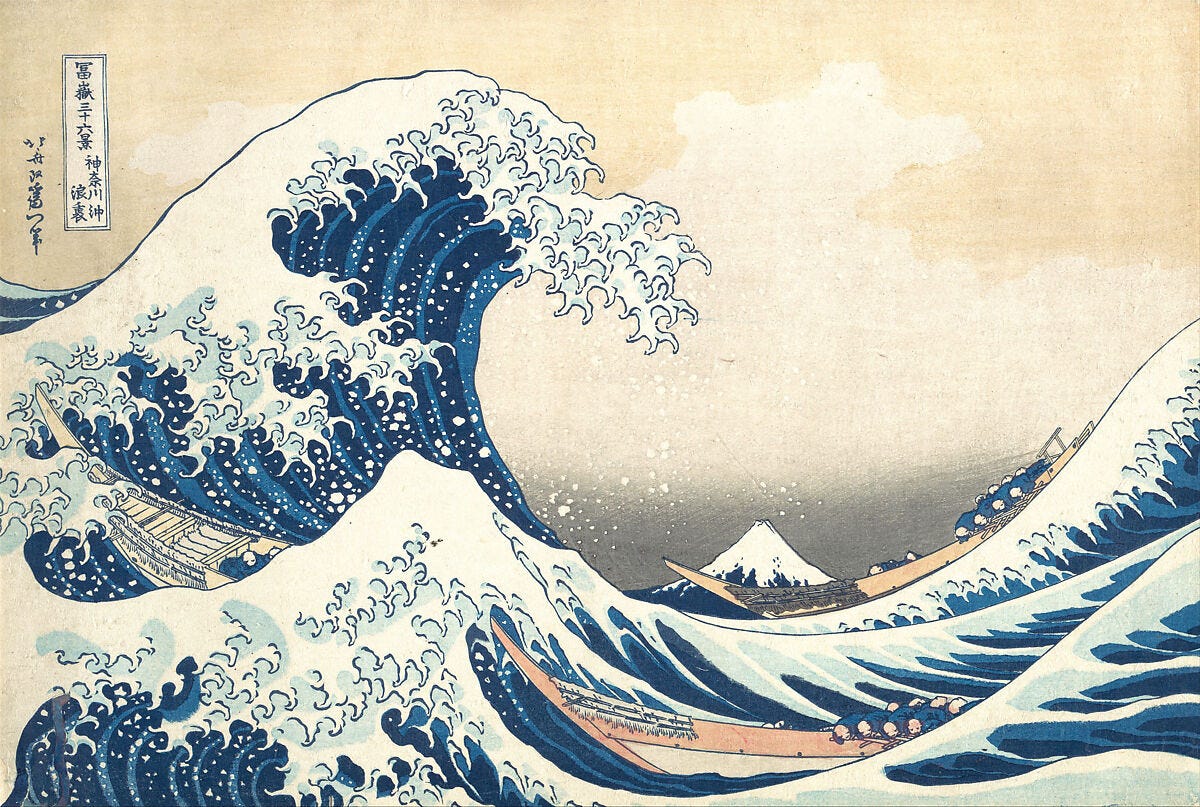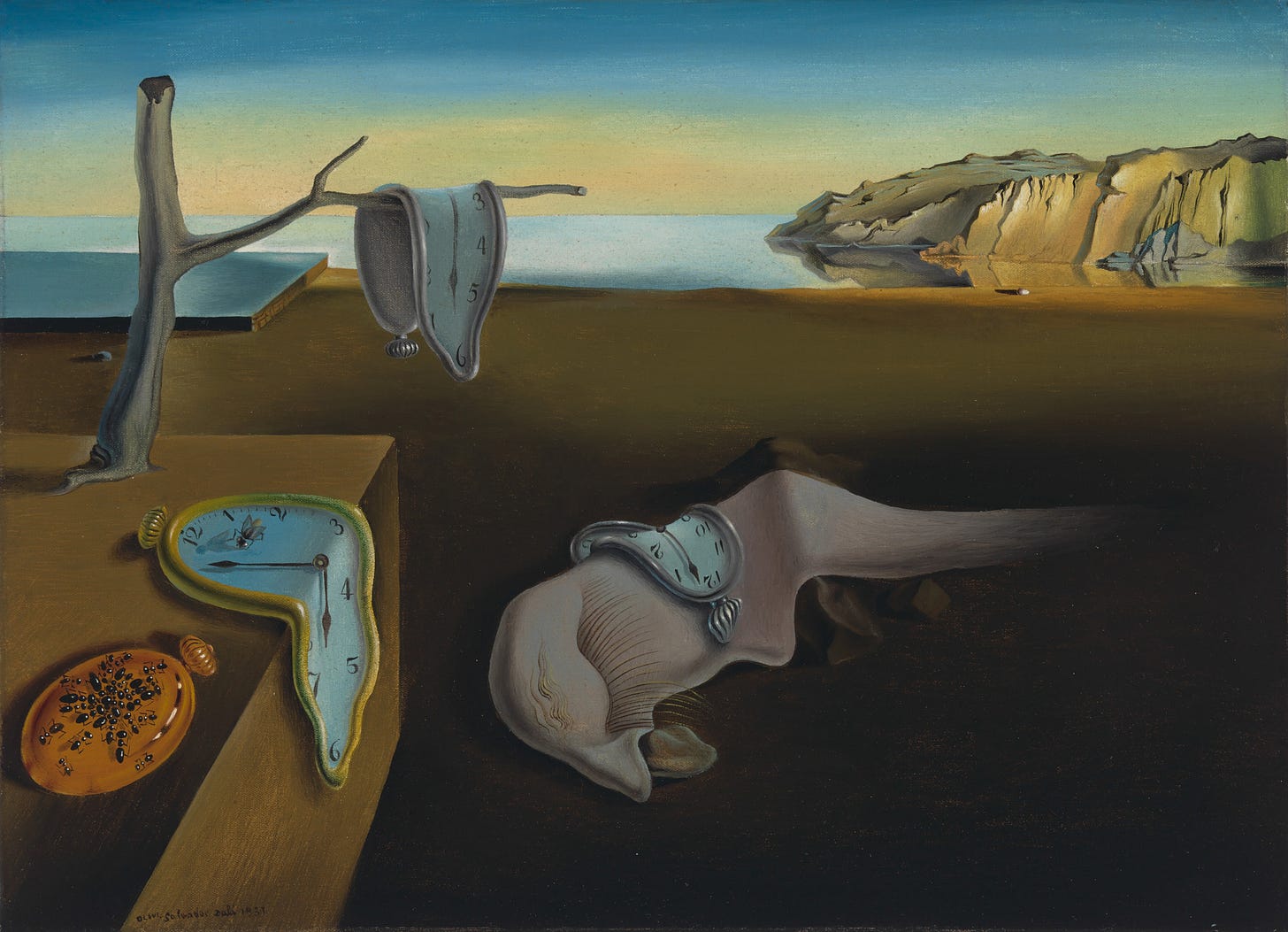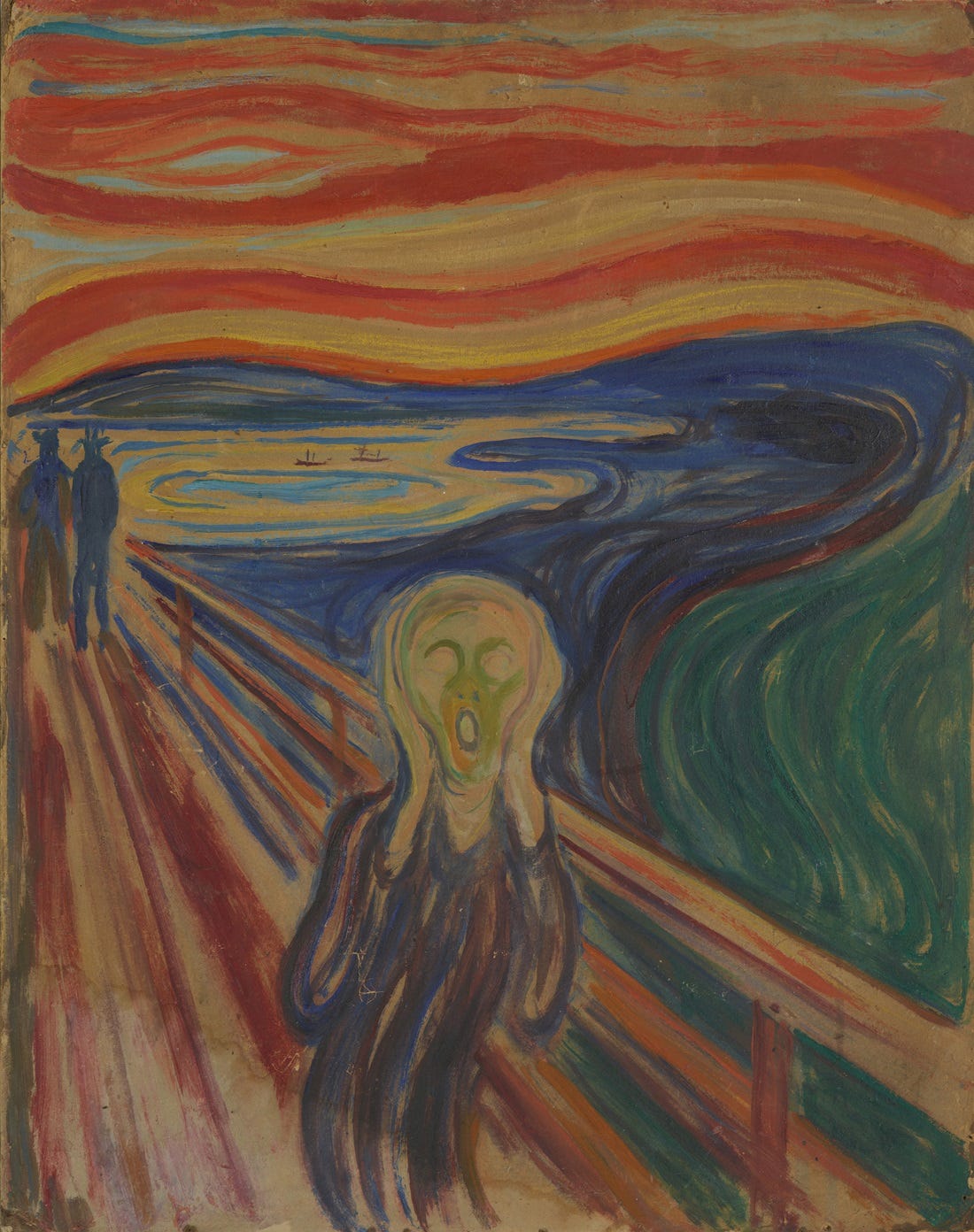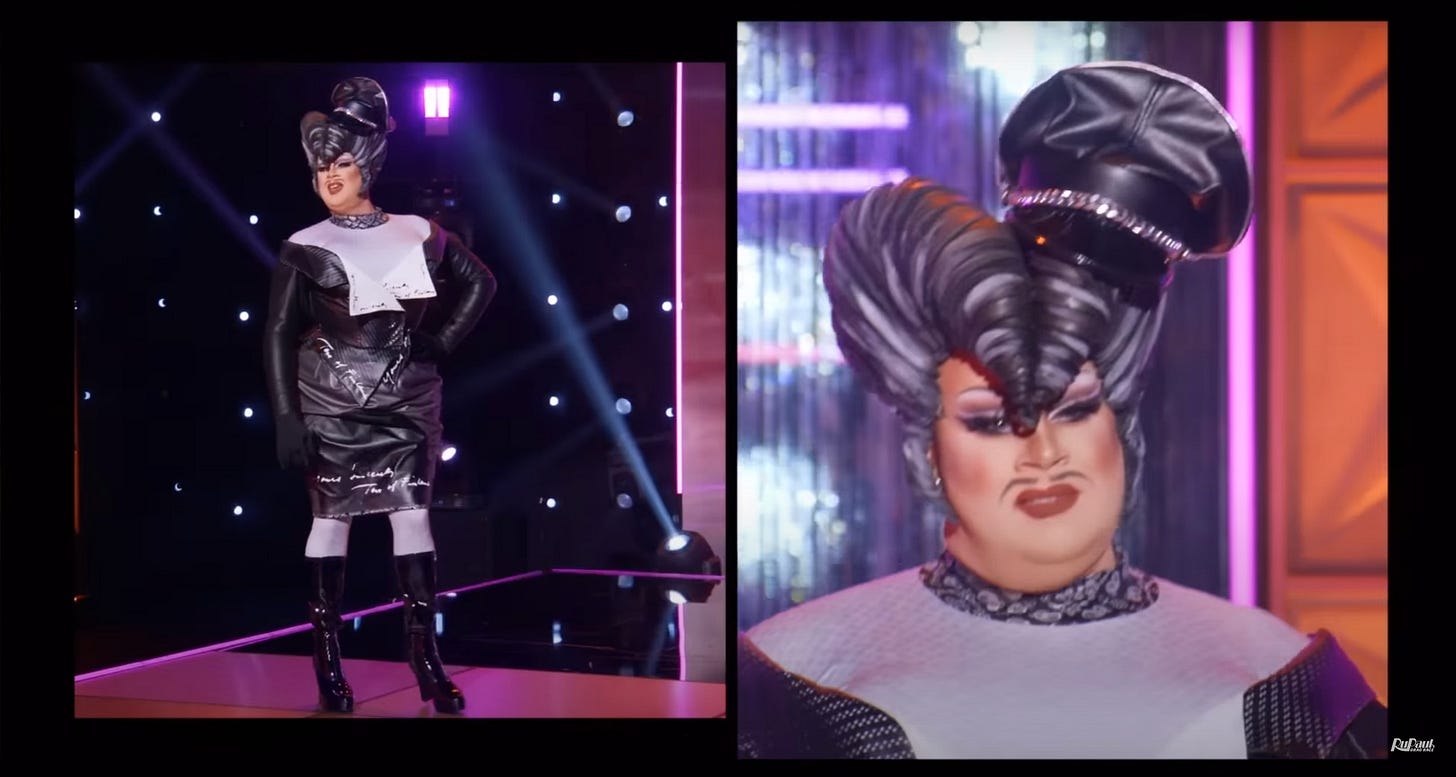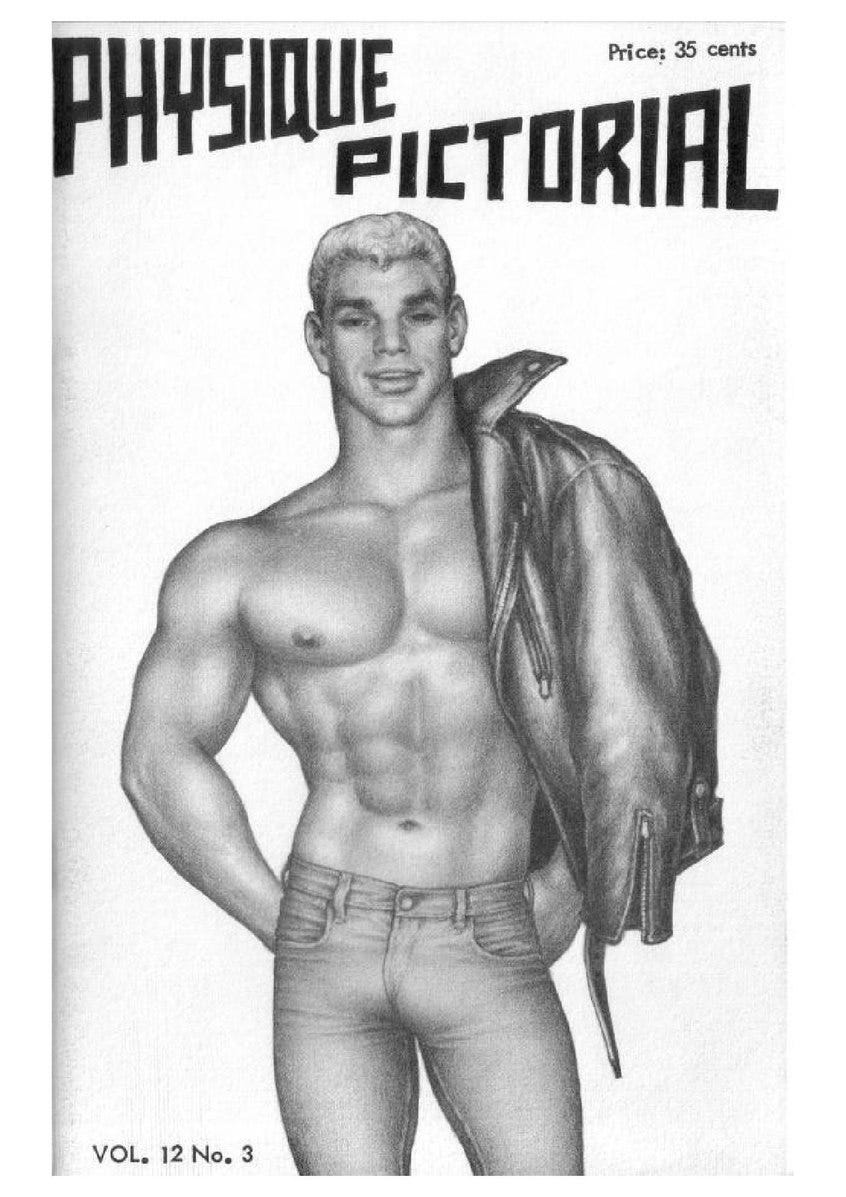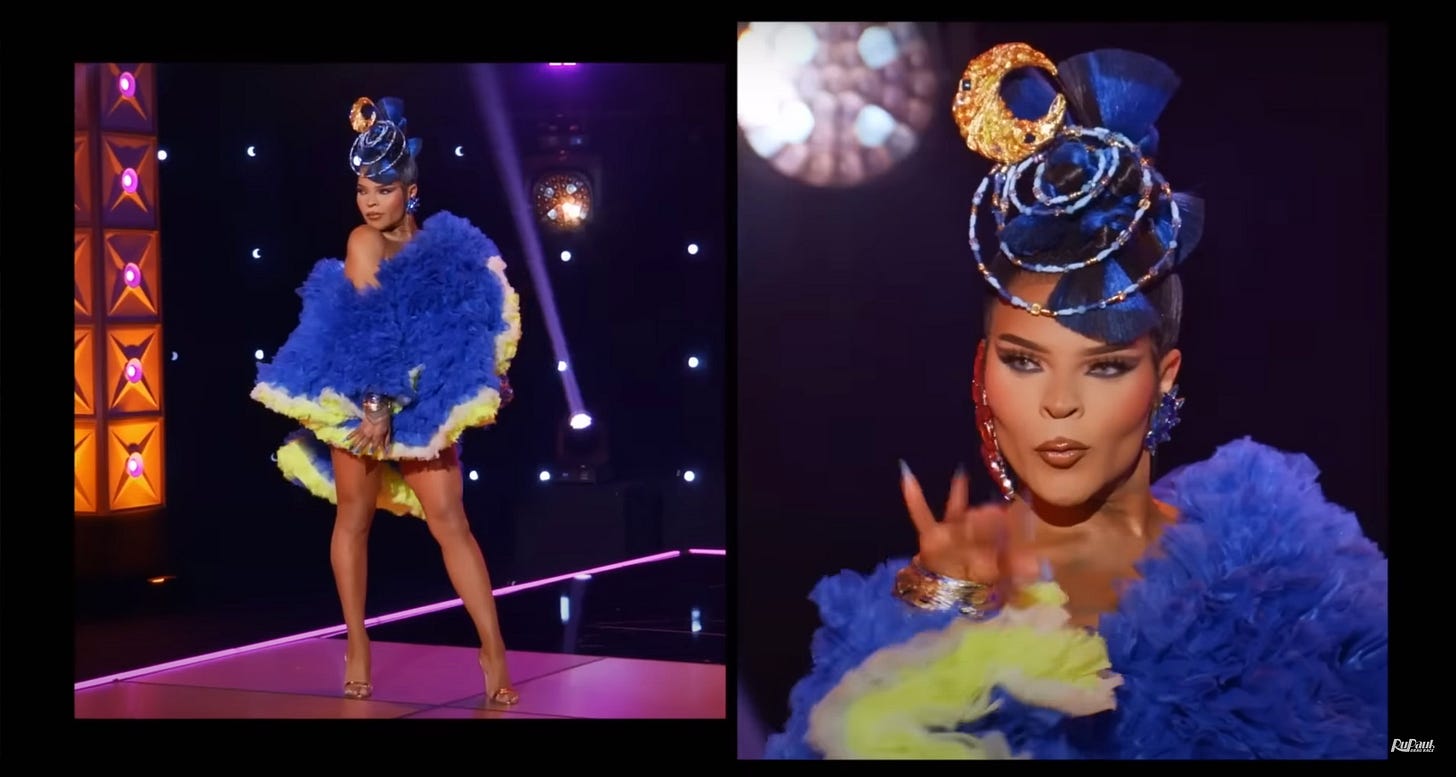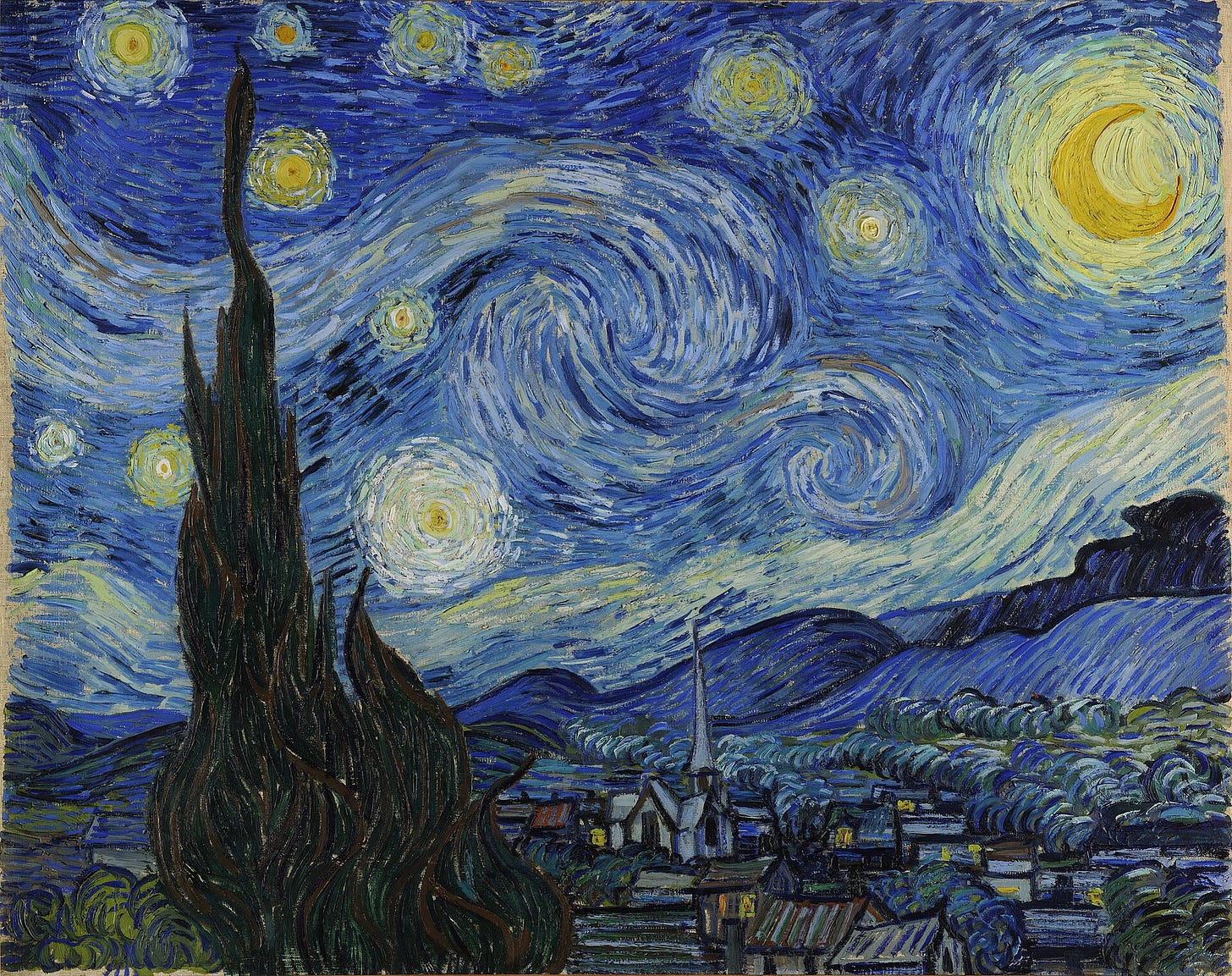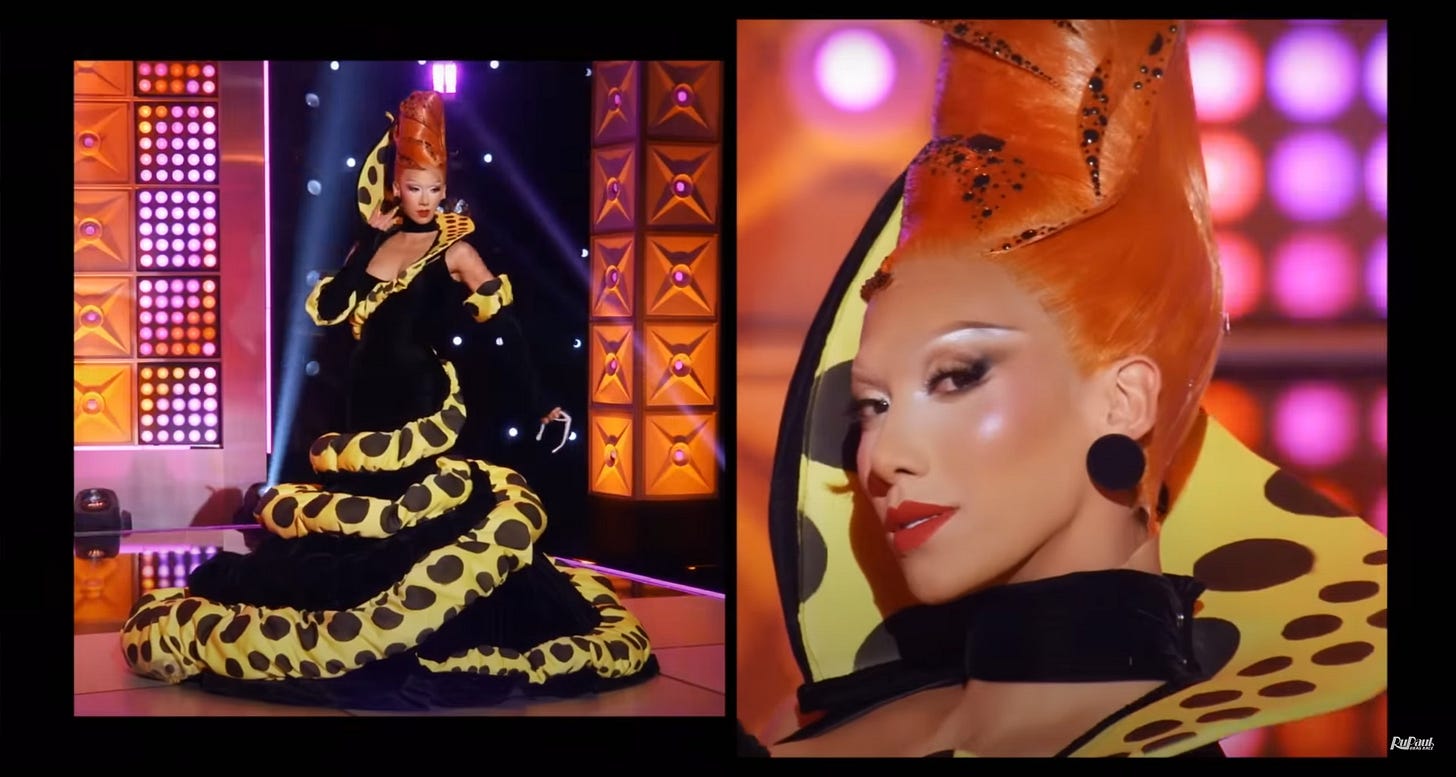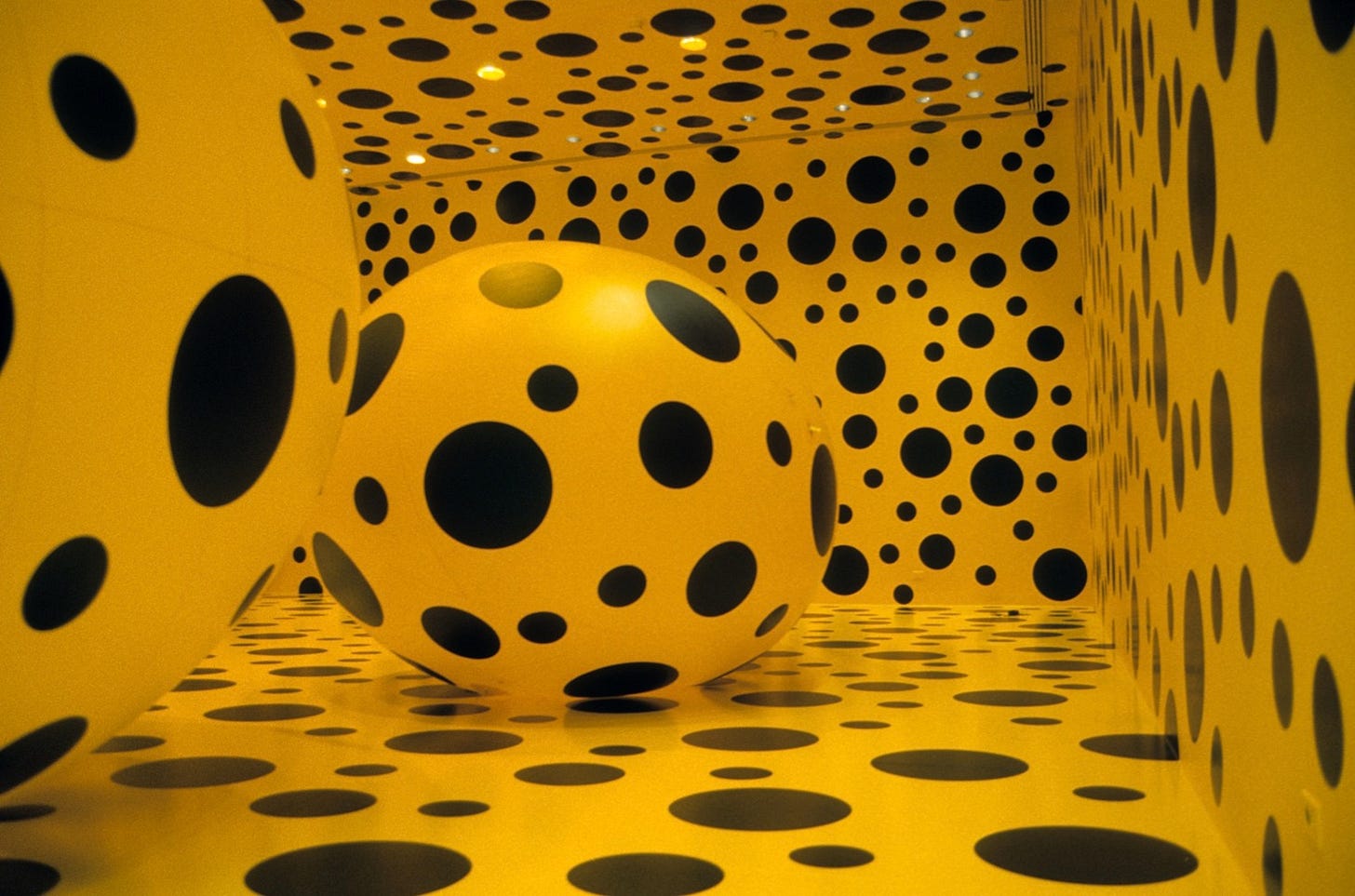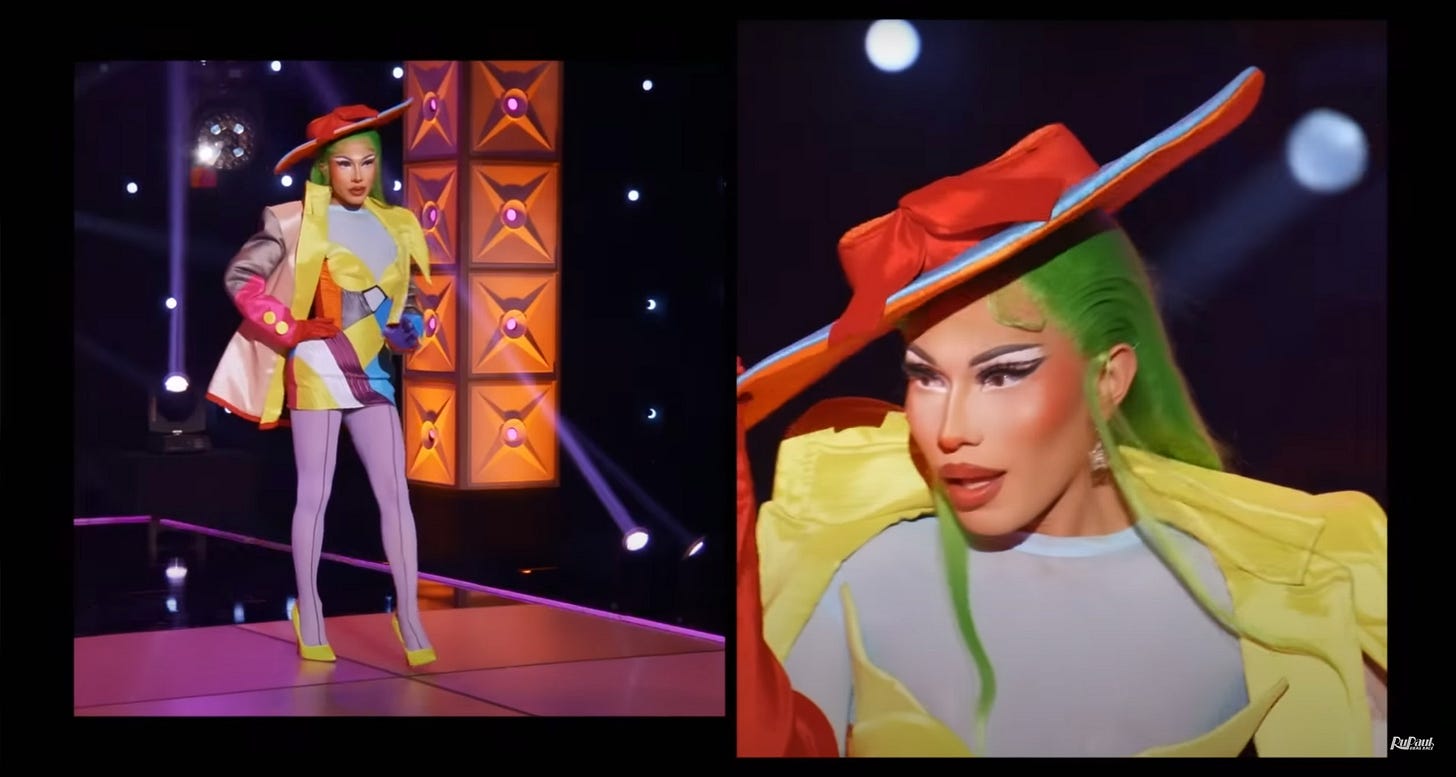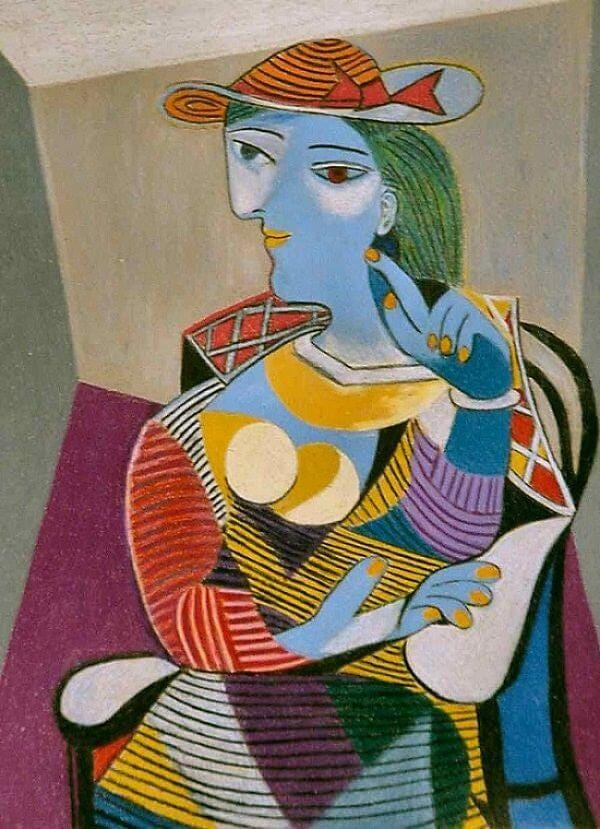RuPaul's Drag Race All Stars Season 9 Episode 2 Paint Ball
an artist's analysis of drag imitates art
When Gottmik walked onto the main stage of RuPaul’s Drag Race All Stars Season 9 Episode 2 in her fully stoned Edward Munch inspired gown I knew I had to write about this episode. Throughout the “Drag Imitates Art” section of the ball (a three part fashion-themed challenge) I was struck by how many of the pieces of art I had taught to my students, and I felt an overwhelming urge to talk about them.
Because of my connection to many of these works, I thought it would be fun to take a closer look at the fashion and share of bit of information about the works and artists themselves.
The Scream? I am the one screaming. Gottmik posted this gorgeous photo shoot to her Instagram (click on the image above to view more details), but several of the queens have not posted their looks yet. Some notes: I found as many of the designers as I was able to and credited them in the image captions since they deserve a world of praise for creating these looks. Additionally, I tried to find official pictures of the runway online, but eventually gave up, so please excuse my meticulously curated screenshots of YouTube.
In order of runway appearance please welcome to the main stage …
Angeria Paris VanMichaels | Piet Mondrian
Angeria Paris VanMichaels is paying homage to Piet Mondrian’s Composition series. One of the best known is 1929’s Composition in Red, Blue, and Yellow, which was one of his early paintings in the series.
This work is quintessential Mondrian and is probably the first piece that comes to mind when thinking of his art. Mondrian came up with the term “neo-plasticism” to describe his style of art which utilized primary colors along with horizontal and vertical lines. He considered abstract art one of the purest forms, and, as an abstract artist, how could I disagree?
A pure creation of the human mind, art is expressed as pure aesthetic creation, manifested in abstract form. … The new plastic … must be expressed by the abstraction of form and colour — by means of the straight line and determinate primary colour. - Mondrian, De Stijl, No. 1, 1917
Shannel | Katsushika Hokusai
Shannel was the first queen to ever walk into the werkroom and I am so thrilled to see her. We are very close in age and many times in reality competition shows, people with a huge amount of experience are seen as outdated instead of as professionals. Shannel is already smashing that ageist stereotype and I love her for that.
Under the Wave Off Kanagawa, also know as The Great Wave, is a woodblock print by Edo period artist Katsushika Hokusai. This print, which is instantly recognizable, is from his series Thirty-six Views of Mount Fuji. One thing you may not know about Hokusai is that he began this series of woodblock prints after suffering from a stroke in his 60s and having to relearn how to create art. Because it is a print there were thousands made, and over 100 are known to survive, but that hasn’t stopped them from each being worth a small fortune.
Roxxxy Andrews | Salvador Dali
Roxxxy Andrews is from Florida which makes her choice of Salvador Dali perfect. St. Petersburg, Florida is home to one of only two Dali museums in the world, the other being in Spain where Dali lived (and was buried). Since the Dali Museum is a point of pride for many Florida artists, I like to think this was a factor in Roxxxy’s choice, which (if true) I love. I also appreciate the nod to Dali himself with the mustache which was a big part of his personal brand.
Now I have to admit that the Florida museum only has the sequel to this piece, but we can look past that. Regardless, The Persistence of Memory is Dali’s best known work and uses some of his regular motifs including the melting clocks and insects (specifically ants) of which he was terrified. The abstract, pale shape in the foreground seems to be nothing at first, but it is actually a self-portrait of Dali in profile (the nose is at the bottom, left and the closed eye and lashes are just above). The cliffs in the background are believed to be located in Catalonia, Spain where his family lived. Additionally, it looks like it would be a large piece, but it is actually quite small measuring 9.5” by 13” which is only slightly larger than a piece of printer paper.
Gottmik | Edvard Munch
Edvard Munch’s The Scream is on the short list of art that almost everyone has seen and Gottmik’s presentation of it is, in my opinion, in the Drag Race runway hall of fame. Out Magazine has a great interview with Gottmik and Disco Daddy about creating the look which took around 1,000 hours and uses 500,000 individually applied rhinestones.
It might surprise you to hear that The Scream above is actually one in a series of four works. Yet another version is a lithographic print of which thirty were estimated to have been made. The first version of The Scream was created in 1893, but Munch continued to create variations of the piece both for clients and himself. The final version from 1910 (above) is the best-known and one that he kept.
Munch’s diary gives us a good idea of what inspired by the piece, in 1892 he wrote:
I was walking along the road with two friends — the sun went down — I felt a gust of melancholy — suddenly the sky turned a bloody red. I stopped, leaned against the railing, tired to death — as the flaming skies hung like blood and sword over the blue-black fjord and the city — My friends went on — I stood there trembling with anxiety — and I felt a vast infinite scream [tear] through nature.
Munch published the text alongside various versions of the artwork making it one of the rare masterworks where the exact meaning is widely known.
Nina West | Tom of Finland
Nina West went a different route than other queens by both choosing an artist outside of the art establishment as well as creating a runway look that represented the artist’s work on the whole rather than a specific piece. Her presentation makes me wonder what production’s guidelines were since all the other pieces were based on a single work of art.
Finnish artist Touko Laaksonen, better known as Tom of Finland, rose to prominence in the queer community after he was published on the cover of Physique Pictorial - a “body building” magazine that was marketed that way to avoid censorship laws - in 1957. The magazine and Laaksonen were significant in the queer community for presenting a highly masculinized version of gay, male sexuality that was in stark contrast to stereotypes about the effeminacy of gay men that were prevalent at the time.
Vanessa Vanjie Mateo | Vincent van Gogh
Miss Vanjie is referencing Vincent van Gogh’s The Starry Night, arguably one of the best-known works of art of all time. She is also representing the artist himself with the red crystal ear jewelry, a nod to van Gogh’s famously severed ear.
As one of the most easily-recognized artworks of all time, most people already know that this painting was created while van Gogh was in an asylum in in 1889 (post-ear severing) one month after admitting himself. However, what might be less well-known is that the large figure in the left foreground is actually a blasted cypress tree that was not visible when looking out from his window. Moreover, this Starry Night is one in a series of paintings, and one which van Gogh considered to be a “failure.” His Starry Night Over the Rhone is a gorgeous example of another starry night painting and it was created in September 1888, months before his breakdown.
Plastique Tiara | Yayoi Kusama
Plastique Tiara is the only queen who showed a piece inspired by a living artist: Yayoi Kusama. This dress combines both Kusama’s signature dots, uses her iconic black and golden yellow color scheme, and incorporates the tentacle shape of many of her soft sculptures. The dots extend into the wig which is a nod to Kusama’s signature brightly colored bob hairstyle.
Dots Obsession is an installation series with rooms that are assembled on site using inflatable elements and mirrors to extend the space. Many installations are exclusive to that site or reconfigured when moved to another exhibit space. Kusama is well known for these large installations that seem to go on forever.
Regarding the use of polka dots, in the 60s Kusama stated:
Obliterate your personality with polka dots. Become one with eternity. Become part of your environment. Take off your clothes. Make love. Forget yourself. Self-destruction is the only way to peace.
Kusama was poised to be one of the most famous artists of the 60s before being sidelined by mental health struggles. In 1975 she moved into a private psychiatric hospital where she still lives today, at the age of 95, still creating art. I believe it is safe to say - without qualifiers - that Yayoi Kusama is one of the most important artists alive today.
Jorgeous | Pablo Picasso
Jorgeous brings Seated Woman by Pablo Picasso to life, sans blue skin. Like Nina West, Jorgeous chose to embody the figure within a work of art rather than the work as a whole. This is a well-known piece by Picasso but not as recognizable as Guernica or pieces from his blue period. Guernica would have been a huge statement on this season with its anti-war message, but it would be no easy feat to translate it into drag.
Seated Woman was painted in early 1937, the same year that Picasso painted Guernica. This Seated Woman is one of many Picasso paintings with the same name and subject matter. The model for this painting is Marie-Thérèse Walter, referred to as Picasso’s “golden muse” who was the mother of one of Picasso’s many children. She met Picasso when she was 17 and the he was 45 and married. Walter was also a model for several of the figures in Guernica and was influential in Picasso’s life until his death.
Final Thoughts
I was absolutely thrilled to see this runway and thought all of the looks were incredible. I get excited any time that art is brought into the pop culture landscape and this was done in a way that shows that art, even classical works, can be inspiring to every artist, not just painters. I also appreciated that they largely stayed away from literal human forms, such as the Mona Lisa (who we have already seen Jax portray), or Frida Kahlo, who many queens have already interpreted. Is it time for a Night of 1,000 Frida Kahlos runway?
This post was a labor of love and took many, many hours of research so I hope you enjoyed reading it! All of my sources are below where you can continue to learn about these artists and their works.
Sources
All of the writing here is my own unless indicated; however, I wanted to use the best sources possible to learn more about pieces, as well as verify information and specific dates. Museum websites, especially those that house the artwork in question, were consulted whenever possible.
“5 Thing You Should Know About The Scream” MUNCH
“About Tom of Finland” Tom of Finland Foundation
“De Stijl” Archive.org
“Dots Obsession” Queensland Art Gallery
“Everything You Need to Know about Hokusai, the Painter of ‘The Great Wave’” My Modern Met
“Marie-Thérèse Walter” Wikipedia
“Neo-plasticism” Tate Modern
“The Scream” MUNCH
“Seated Woman, 1937 Pablo Picasso” Pablo Picasso
“Starry Night Over the Rhone” The Van Gogh Gallery
“Vincent van Gogh: The Starry Night” The Van Gogh Gallery
“Yayoi Kusama: Dots Obsession” Rice Gallery
Images
“The All Stars 9 Paint Ball” RuPaul’s Drag Race YouTube channel (video has been made private but I will leave the link in case they reinstate it), screenshots by me
Dali via the MOMA
van Gogh via Wikipedia
Hokusai via the Met
Kusama via Rice Gallery
Mondrian via Kunsthaus
Munch via MUNCH
Picasso via Pablo Picasso
Tom of Finland via Wikipedia


